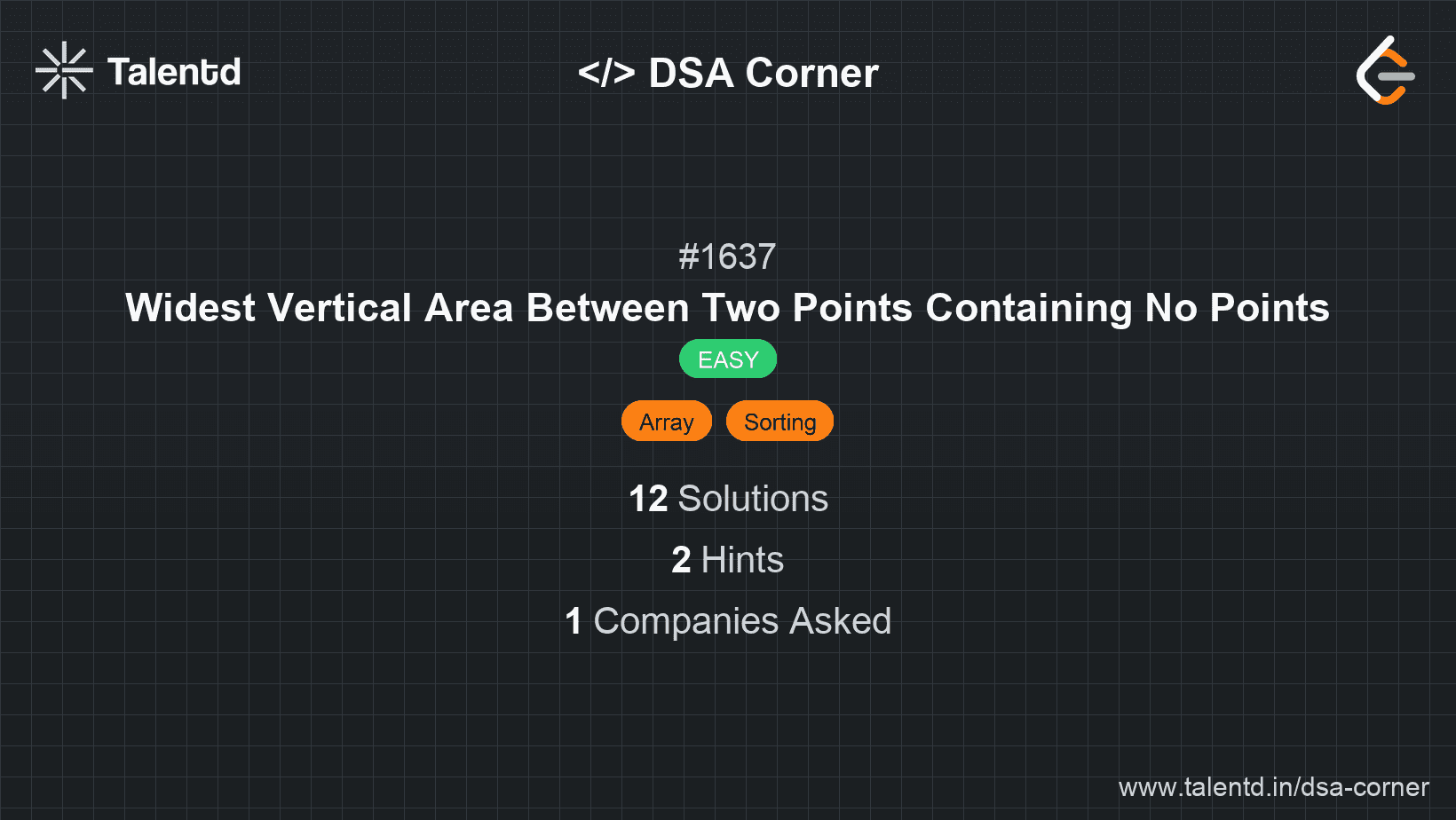
Sponsored
Sponsored
This approach involves sorting the x-coordinates of the points and then finding the maximum difference between consecutive sorted x-coordinates. This difference gives the widest vertical area between any two points.
Time Complexity: O(n log n), due to the sorting step.
Space Complexity: O(n), due to the additional array holding the sorted x-coordinates.
1#include <iostream>
2#include <vector>
3#include <algorithm>
4
5int maxWidthOfVerticalArea(std::vector<std::vector<int>>& points) {
6 std::vector<int> xCoords;
7 for (const auto& point : points) {
8 xCoords.push_back(point[0]);
9 }
10 std::sort(xCoords.begin(), xCoords.end());
11 int maxWidth = 0;
12 for (size_t i = 1; i < xCoords.size(); ++i) {
13 maxWidth = std::max(maxWidth, xCoords[i] - xCoords[i - 1]);
14 }
15 return maxWidth;
16}
17
18int main() {
19 std::vector<std::vector<int>> points = {{3, 1}, {9, 0}, {1, 0}, {1, 4}, {5, 3}, {8, 8}};
20 std::cout << maxWidthOfVerticalArea(points) << std::endl;
21 return 0;
22}This solution leverages the C++ STL to handle sorting and max calculations. It extracts x-coordinates into a separate vector for sorting and then finds the maximum gap.
Although not commonly necessary due to the constraints provided, if x-coordinates were to be over a smaller range, a variant of bucket sort could be used to place x-coordinates in a collection of buckets. This helps find consecutive x-coordinate gaps in nearly constant time, potentially improving performance by eliminating the general-purpose sort with more specialized data placement.
Time Complexity: O(n) expected when bucket conditions are met.
Space Complexity: O(m) where m is the bucket range size.
This solution suggests using bucket sorting to illustrate constant time distribution. It remains inefficient for such large numeric spaces but represents keen algorithmic experimentation.